By Lidija Biro
While discussing who could be the next ‘Maverick’ to profile, editor Rick VanSickle said, “Check out Ali Oppenlaender, she’s got something to say!”
So, I reached out to Ali (Alison) who agreed to the interview and promptly took me on a whirlwind tour of the vineyards that the Oppenlaender family owns or manages in Four Mile Creek, the St. David’s Bench and Niagara River sub-appellations.
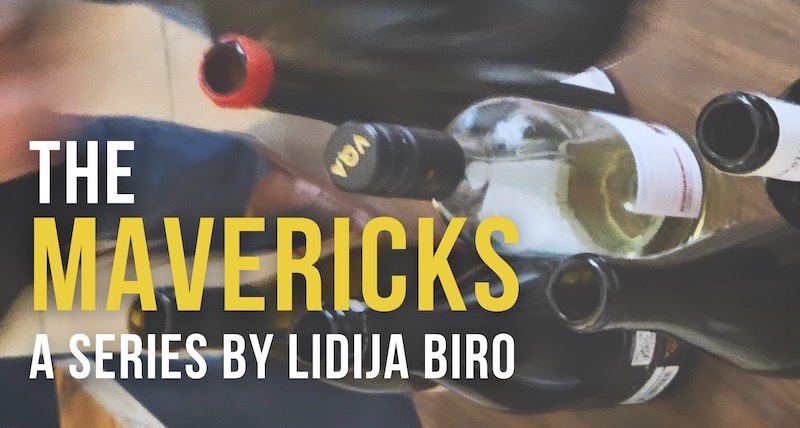
As we drove, Ali supplied a continuous stream of dialogue with grape grower and wine industry insights and family history. She is passionate, not only about Liebling Wines — which she co-owns with her sister Jessica and father Matthias — but about Ontario wines in general.
“We are currently at a pivotal moment that allows us to reshape consumers’ perceptions of local Ontario wine. And what better way to do that than by connecting them with some of the passionate people who help shape our grape and wine industry,” Ali Oppenlaender asked recently in one of her social media posts. She definitely has something to say. Oppenlaender is our ‘next generation’ Maverick.
•••
Wines in Niagara: You have a long history of promoting Ontario wines. You worked for over a decade with the Wine Council of Ontario — rebranded in 2018 as Ontario Craft Wineries. Tell me about your work there.
Ali Oppenlaender: Yeah, I did work in PR and marketing but then moved into government relations advocating on behalf of member wineries. Although I have a degree in literature and communication (from Brock University), this is where I really learned to write, having to produce a multitude of press releases.
I remember someone saying, “if you’re not talking to the government and you’re not telling them what the issue is, someone else will.”
And they’ll listen to that story. And they’ll believe that story. So, it becomes your responsibility to advocate for the common good because they’re the ones controlling the red tape. They’re the ones controlling where the money is going.
I did it for five or six years and then by the end when I was on my second maternity leave, I said “OK, I’m kind of done.” My dad is still heavily involved with it as the chair of the GGO (Grape Growers of Ontario).

•••
WIN: Was that around the same time as the creation of Liebling Wines?
Oppenlaender: Yes. Jess just finished her oenology program, she just graduated from Brock. Meanwhile, I was still council volunteer at Ontario Craft Wineries and about to have my baby when Jess went to dad and said, “Let’s do it. Let’s make a small batch of wine.”
Mark Pistor (winemaker and owner of Fogolar Wines) was one of her professors at Brock and he kind of put a little bug in her ear … “Have your family make small batch wine.” My dad was like, “OK, Jess, let’s do it!”
In the meantime, I gave birth to my second child and they just kind of let me be. Jess didn’t talk any business with me yet. But then by December, when my baby was two months old, Jess came to me and said, “I know, Allie, you’re kind of going through a rough patch right now, but we have wine in barrels. Oppenlaenders have wine in barrels that need a brand and that we need to sell. Are you in?” And I was like, yes, I’m in!
So, I spent the rest of my maternity leave building a wine brand. I was still, of course, focused on my newborn, but I also had something else to look forward to.
From December to when we launched to the public in May 2023, we were working on the branding, we were working on the labels, the bottles, like everything. When we launched in May, I believe I had five months left of maternity leave. I was so focused on selling our wine and trying to do as many farmers markets, pop ups and cold calls to restaurants as possible. When September came, I realized I had to go back to work. What do I do?
I decided to give my notice, which was hard. When you work with someone for so long you build a professional relationship, and you also build a friendship. I felt like I was letting them down, but I also needed to grow. I needed to do this. I needed to do this for my family, for me and Jess. And it’s been great!
I’m learning so much and I’m learning from my younger brother, Aaron, who is a vineyard manager now. I find it fascinating the little tidbits of knowledge, and I’m trying to share it back on my social media posts. If no one finds it fascinating, then they can just swipe or not read.
I chose to post a little differently depending where … we all like pretty things and that’s what Instagram is. LinkedIn is more word focused. It’s more text heavy so I can go deeper by giving a little bit of an education.
I just want people to have that passion for this industry, even if they’re not getting their boots and hands dirty.
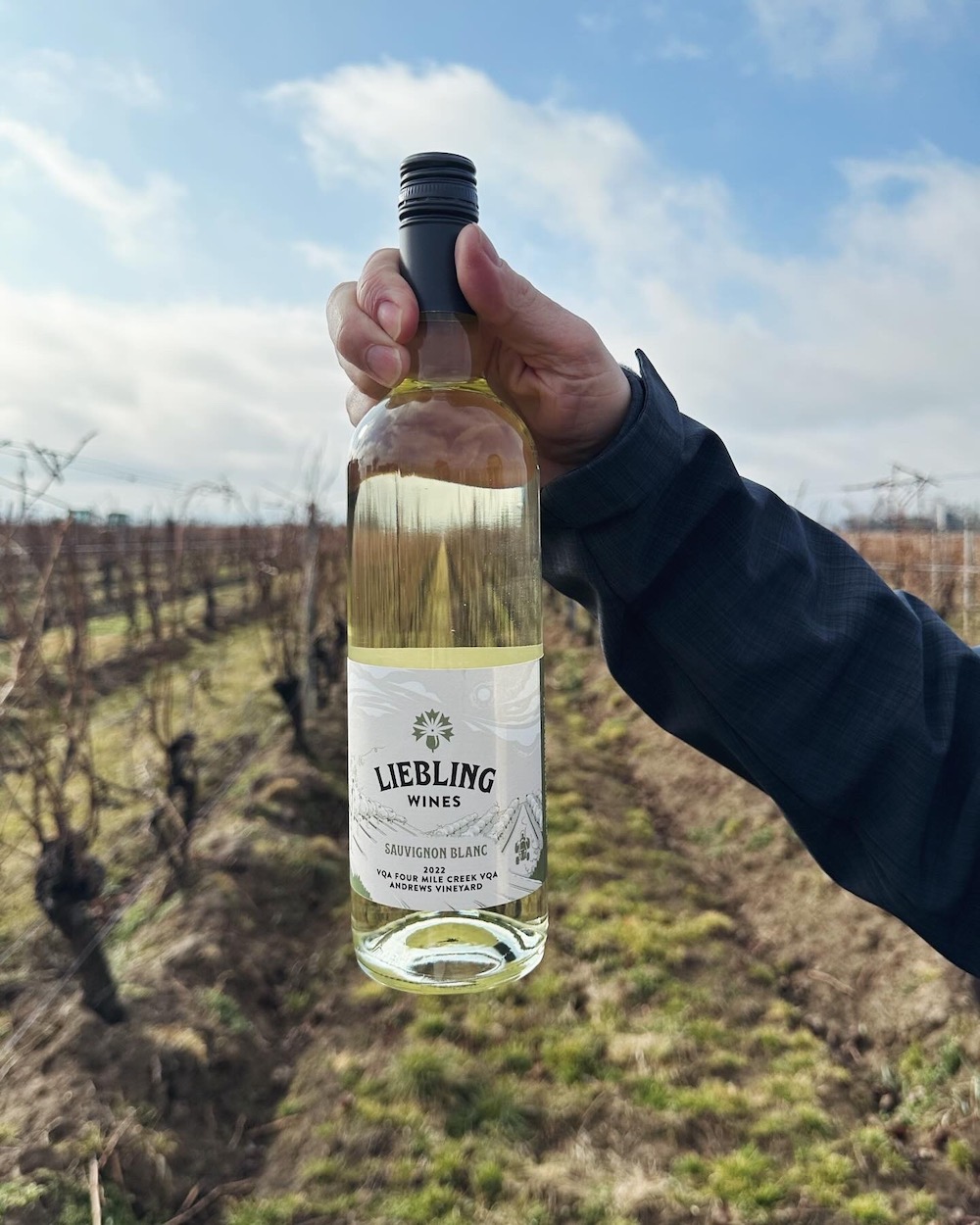
•••
WIN: I like the design of your newsletter and wine labels. Tell me more about the goal and concept behind both.
Oppenlaender: We don’t have that benefit of interacting with guests face to face and telling them our story and telling them about our wine.
Note: Liebling wines are made by Jess Oppenlaender and Jeff Moote at Collab Wine & Beverage; a Liebling winery is a dream for the future.
So, our newsletter has to get people interested in our wine and purchase our wine. At the end of the day, we need wine sales. But I also want our newsletters to be kind of fun and easy to read, and to look pretty.
So, we did work with a local designer for the colour palette. It was really important for Jess and me to work with someone new that hadn’t really been involved in the industry and didn’t have preconceived ideas of what the industry is. We wanted young, fresh eyes.
We hired two young people, a great brand identity designer, Jordan Versluis (visual identity and logo designer in St. Catharines) and Alyssa Gibson, who worked on our label. She had just graduated from Niagara College when we hired her. Jess and I like to help someone who’s just beginning her career, to add something to her portfolio.
They really got it. We met with them quite a few times on Google Meet and Zoom calls. We had lots of vision boards and Pinterest boards and ideas all over the place. But they were able to narrow it down for us. What they created is harmonious and works together. Yeah, we now live in such a visual age.
On our wine labels, at the side where we have the harvest date, there’s a flower and that flower is connected to someone in the family. So, on the Riesling label there’s an orchid for Oma (our grandmother). Oma loved Riesling, she’s German but she loved Ontario Riesling. She thought we could make really good Riesling here. And we can.
So, the Riesling is for her and you may notice on the label there are two people walking in the vineyard. That is based on a photo of my dad and my Oma (grandmother) walking in that vineyard on her last trip. Her last time coming to Canada.
And then the Sauvignon Blanc has a cornflower which is the national flower of Germany and our logo as well. The cornflower logo’s base, the bulb, looks like a wine glass.
The Gamay has a dahlia and that’s for me. It also has a nerdy bookworm in the vineyard.
Jess’s flower is on the Cabernet Franc label, anemone flowers. They are her favourite.
And for the Family Select Cabernet Franc there is a bouquet of those four flowers coming together. I love the symbolism of that.
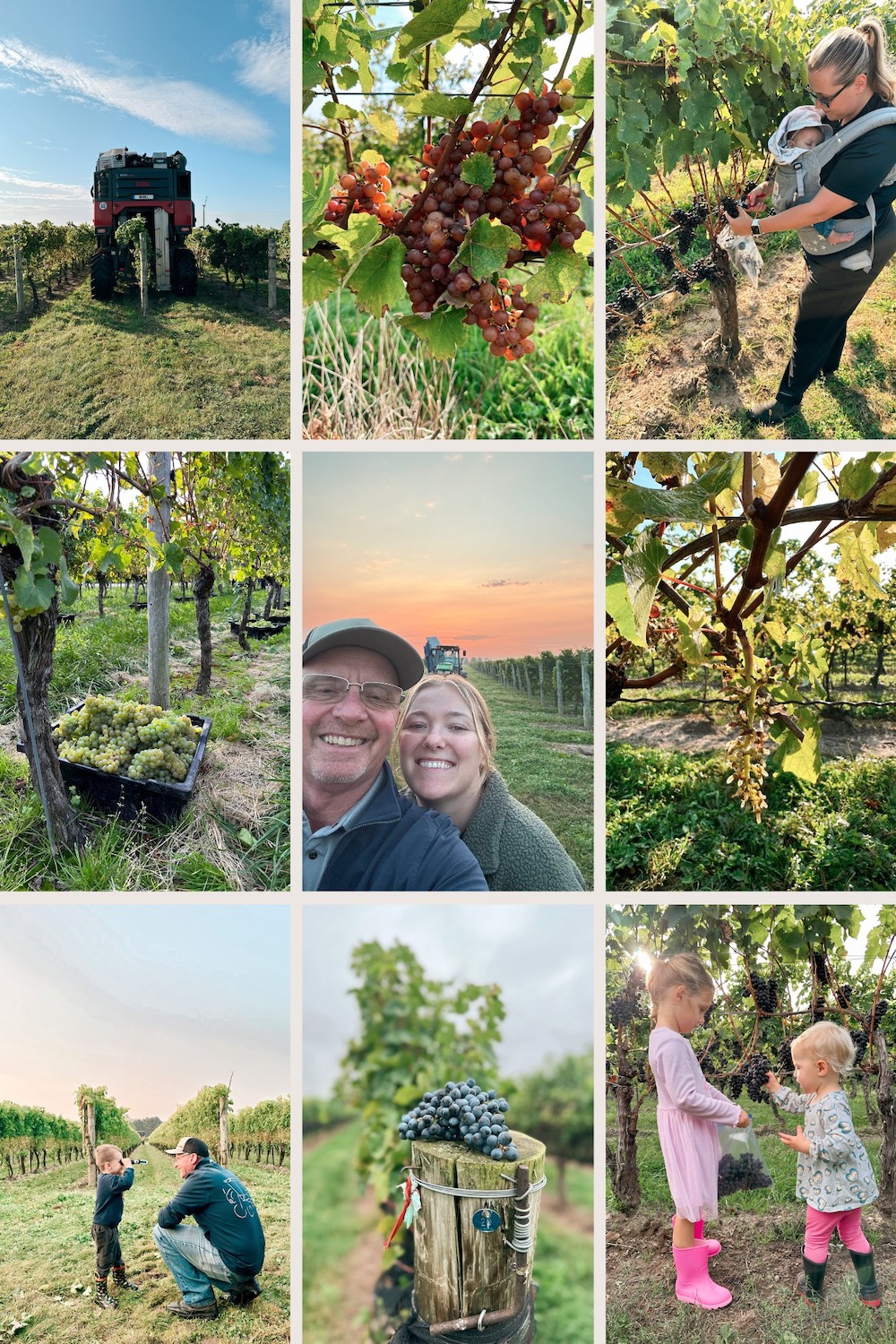
•••
WIN: Your whole family is involved in viticulture and sustainable grape growing in Niagara. Tell me more about that.
Oppenlaender: We do vineyard management, custom harvesting, equipment sales and vines sales. We manage just over 1,000 acres that includes our own 300 acres. We recently added two new contracts this year. So, we’re busy. My job also entails administrative work, health and safety for our seasonal workers and regular employees. Besides the 34 Mexican workers, we have around 25 full time staff.
Sustainability encompasses everything, how we treat our employees, how we take care of our business to make sure that we’re economically viable — so we can pay members of our team, and those members can actually afford a living.
We’re part of the environmental farm plan, and like I said, my brother, who now manages all the vineyards, he’s not putting poison into vineyards. We want to have sustainable vineyards for generations. We want to make sure the soil is healthy. We want to make sure the grapes are healthy. But that also means, we need to protect them from mold and fungus which we have a lot of in Ontario. Yeah, and I get it “spray” is kind of a scary word, but they have come such a long way since the 1970s and 1980s.
Huebel Grapes Estates and Liebling Wines are not connected. They are separate entities. Jess and I are Liebling Wines, but we also work with Huebel Grapes, so we are able to piggy-back and cherry-pick our favourite vineyards for the fruit going into our wines.
Essentially, the focus really is on family. Our Oma was the one who encouraged my dad to come to Canada. He came in 1984. He was only 22, the youngest of nine children and Oma’s “liebling” or darling and a 6th generation farmer. He got hired to plant a small vineyard (the 40-acre Huebel Vineyard, Niagara River sub-appellation).
His plan was always to be here for just a year and go back home. But then he kind of fell in love with the area and met someone, married, and had me. Then the family grew, the vineyard grew, and he built this life.
Now that I’m older and can look back, I’m able to appreciate it. Like wow, this is something really special. That’s why I needed to come back to the family farm; it’s now our responsibility to keep this legacy going.
All my siblings have young kids. They are very young, so nowhere near knowing what they want to do for their careers. But the hope is that they will love farming as well. We don’t want to push them like my parents never pushed us … we just all happened to kind of come back to the family farm.
And it would be so cool if there is an 8th generation of this family continuing to farm grapes!
My oldest, Hannah, was waiting for her school bus the other day and asked, “Are you a farmer?” And I was like, “I don’t know if I’d really call myself a farmer. I work on the farm, and I help everyone else that does the farming work to make sure they’re safe.”
And then she said, “I don’t want to be a farmer when I grow up.” [Ali laughs.]
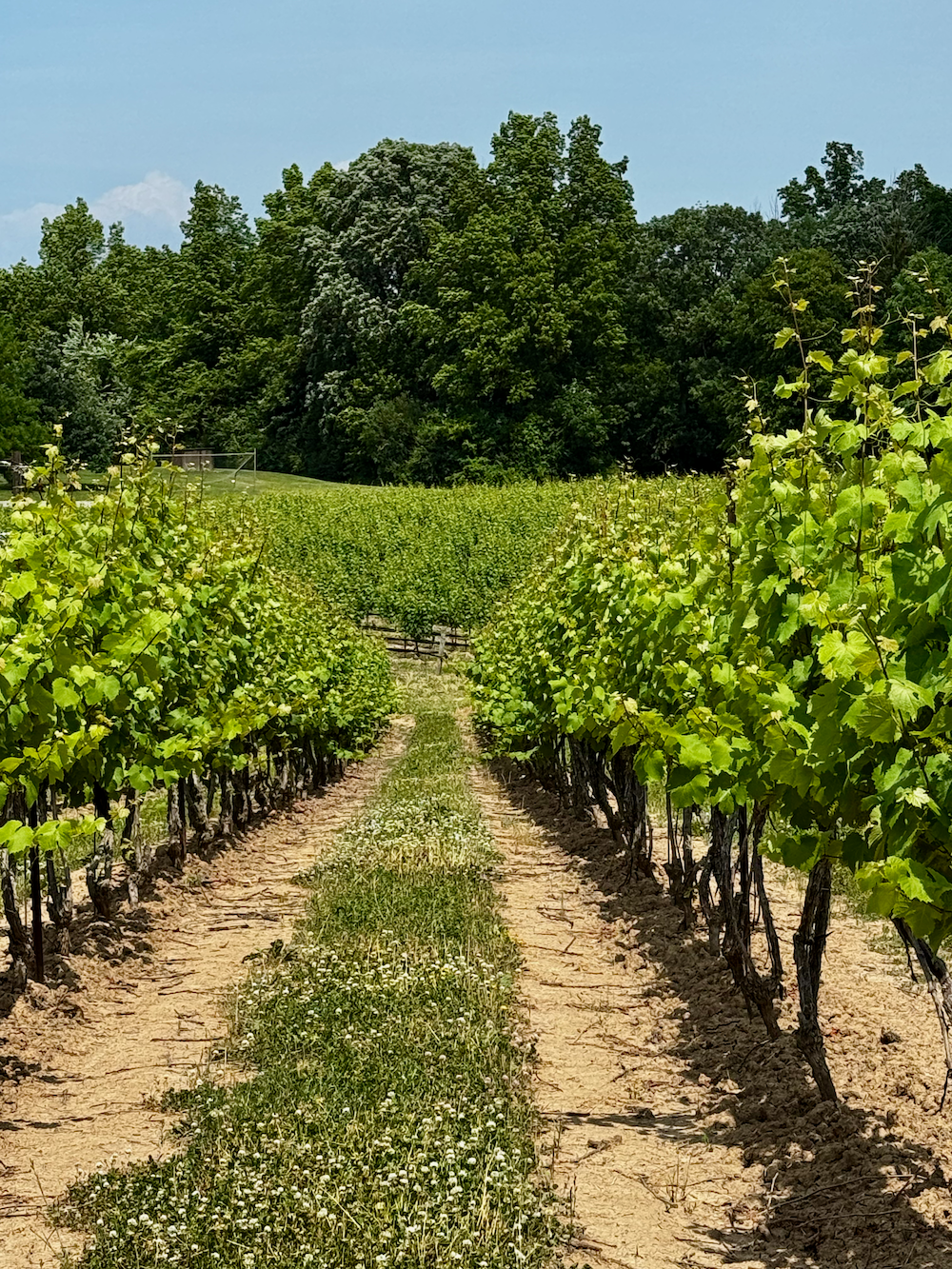
•••
WIN: As an English Literature major and an avid reader, it is evident you like stories. What is the basis of good wine marketing and storytelling?
Oppenlaender: Good question. Jess is the technical one, she’s the data, she went to school for winemaking and viticulture. And she gives that information to me. My role is to be the storyteller, to create something inviting with all that information for consumers.
Good wine, good communication, and good storytelling. They all have to be like a Venn diagram, right? They all have to be on top of each other. They all have to be interacting. You can have good wine but if the other components are missing, it doesn’t work. It won’t sell.
When consumers taste a wine and if they like it, they may buy it. But if you are telling them a story while they are tasting, they’re going to remember snippets of that story even when they drink that wine at home. Then they might tell their friends, and this creates an opportunity for the friends to become invested in that wine. So, then they go and buy it. It’s like this ripple effect.
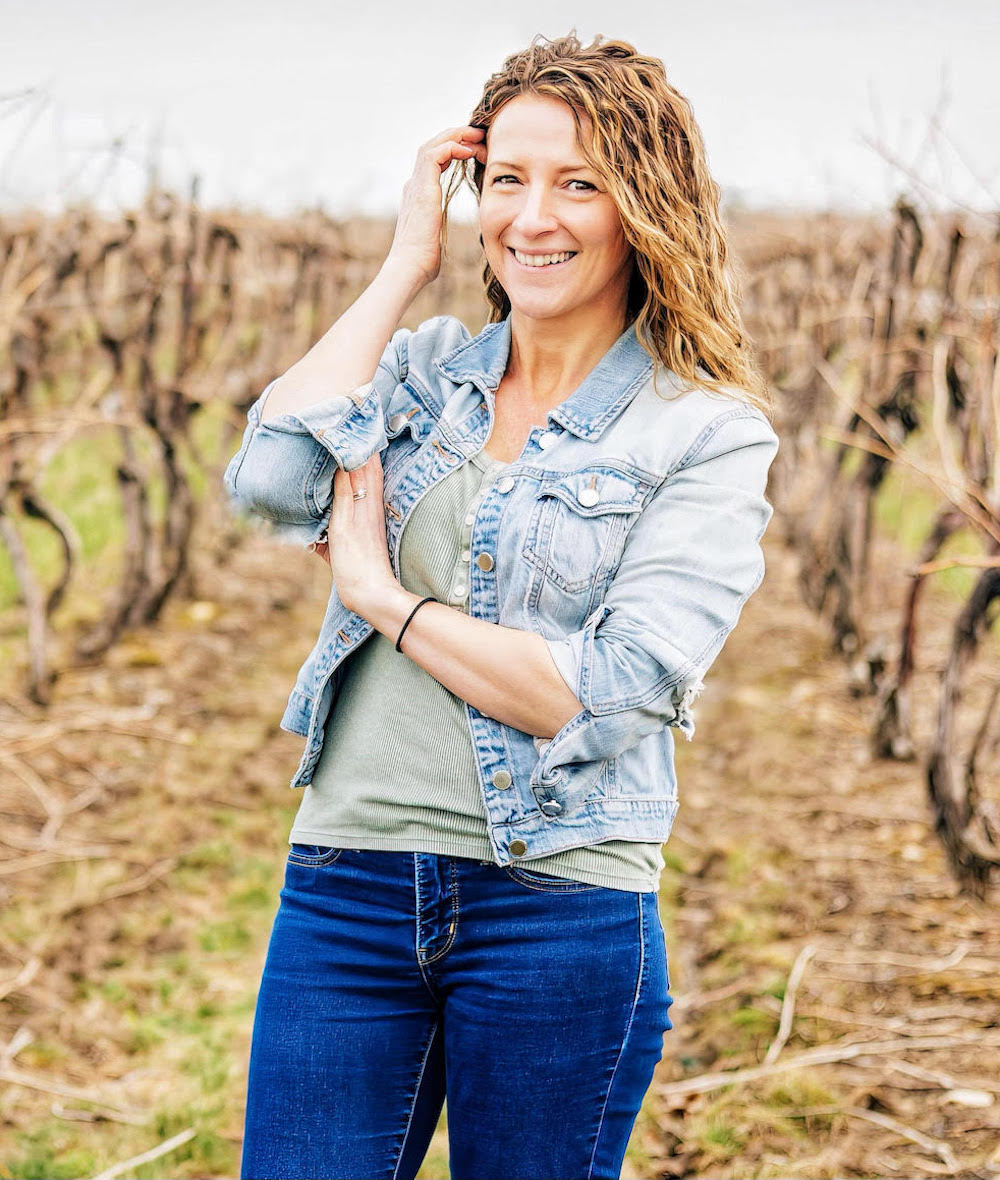
•••
WIN: I notice that you dedicate some of the proceeds of your wine sales to charity. Why?
Oppenlaender: Yeah, so Jess and I are very privileged to be able to do this. We feel very fortunate even though we both still work very hard in the family business. We recognize that we’ve been given so much and so we have a responsibility to give where we can. Does that make sense?
So, we decided that with every vintage, one wine will be selected and one dollar of every bottle sold will go to a cause that means something. Again, it’s not a huge amount, but we’re making small lots. It’s a very small production.
With our 2022 vintage, we donated to the Alzheimer’s Society. The family where we get our Riesling grapes has been impacted by Alzheimer’s, so it is a perfect gift for us to give.
And then the Sauvignon Blanc that we just released comes from our vineyard and we’re donating proceeds to the Walker Cancer Centre in St. Catharines in honour of family and close friends impacted by cancer.

•••
WIN: What are your thoughts on the LCBO’s support of Ontario wine?
Oppenlaender: They carry our wine, and we are grateful for that. But I am disappointed that they give IDB wines (International Domestic Blends) so much shelf space. If you are a consumer without much knowledge of wine, you might recognize the winery name, and it’s probably one of the big guys, so you buy thinking, “I’m supporting local.”
You have to seek out “true” Ontario wine usually further back in the stores. And it’s hard to find someone to tell you about it. Yeah, so it’s unfair competition for smaller producers.
•••
WIN: Since we’re talking true Ontario wine, what are some of your favourites?
Oppenlaender: I love Pinot Noir. I’m a big fan of Riesling. I like it dry, but I will never say no to a Riesling Icewine! It has a nice balance of acidity and sweetness. It’s such a nice treat.
I’m also a huge fan of Cory Mio’s Marsanne. And then, of course, Ontario sparkling wines are great. 13th Street is my go-to.
•••
Ali Oppenlaender’s enthusiasm and love for her family, her appreciation of farming and multi-generational grape growing, and her passion for and promotion of Ontario wine makes her a true ‘maverick’ … one who is firmly rooted in Niagara’s fertile soils.
Two Liebling wines recently reviewed by Wines in Niagara:
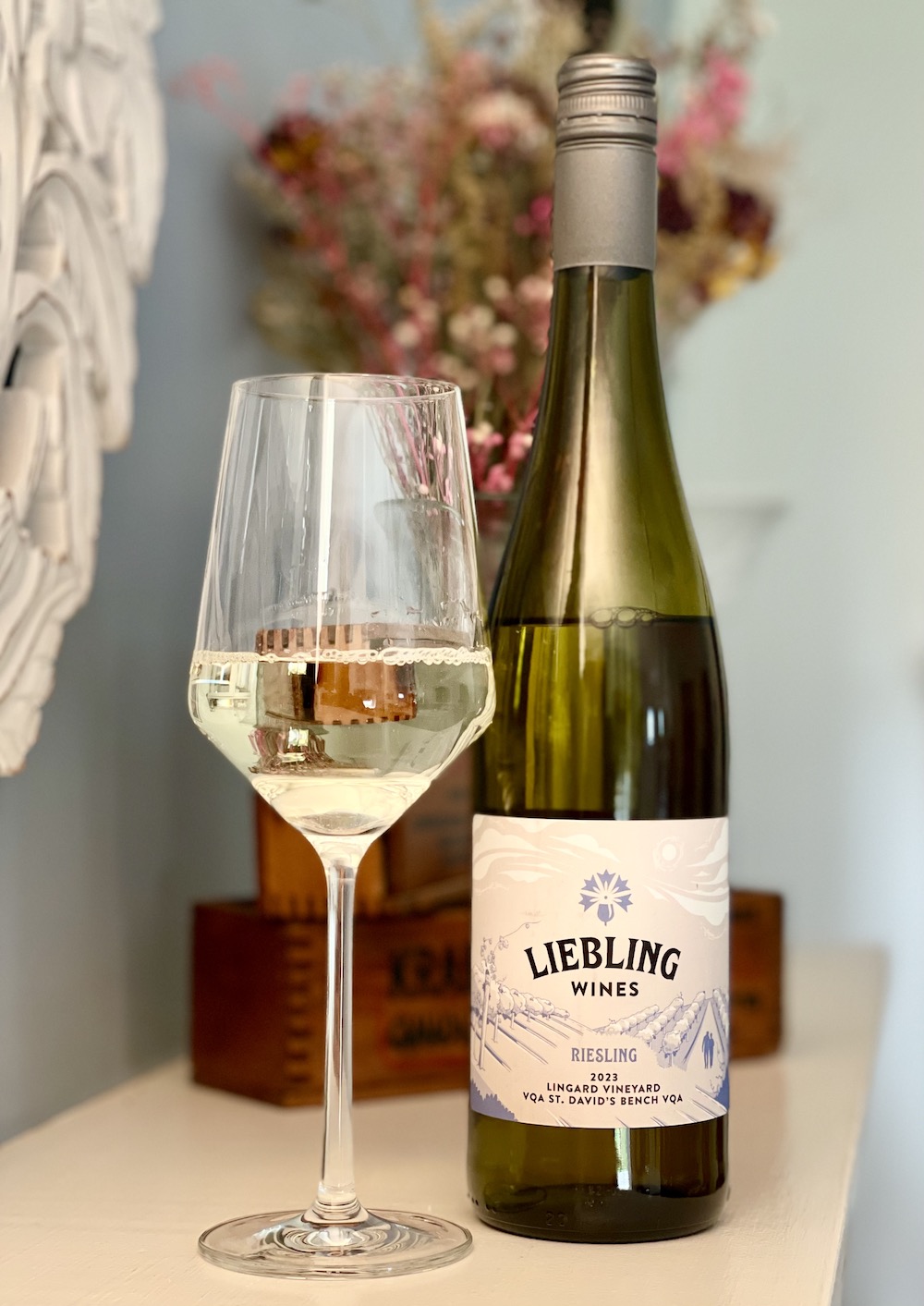
Liebling Riesling 2023 ($22, 90 points) — The grapes are from the Lingard Vineyard on the St. David’s Bench that was planted in 2006 to the 21b Clone. Fermentation was stopped to leave a bit of residual sugar (8 g/l) to balance the crisp acidity. A classic Niagara Riesling nose of lime, grapefruit, floral lift, lanolin and white peach. It’s nicely balanced on the palate with lip-smacking citrus, summer peaches, ginger, honeycomb and yellow apple with a zippy, lifted finish. Can cellar through 2031. (Review by Rick VanSickle)

Liebling Sauvignon Blanc 2023 ($22, 91 points) — The Sauvignon Blanc grapes are from the Andrews Vineyard in the Four Mile Creek sub-appellation. This is made in a fresh, vibrant style with a cool-climate nose of grapefruit, kiwi, passionfruit, green pear, and herbs. The fruits are more rounded on the palate (thanks to different picking days over two weeks) and reveals more tropical fruits to go with bright citrus and kiwi with mouth-watering and a tangy finish. Drink now or in a year or two for more integration. (Review by Rick VanSickle)
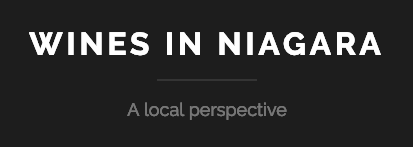

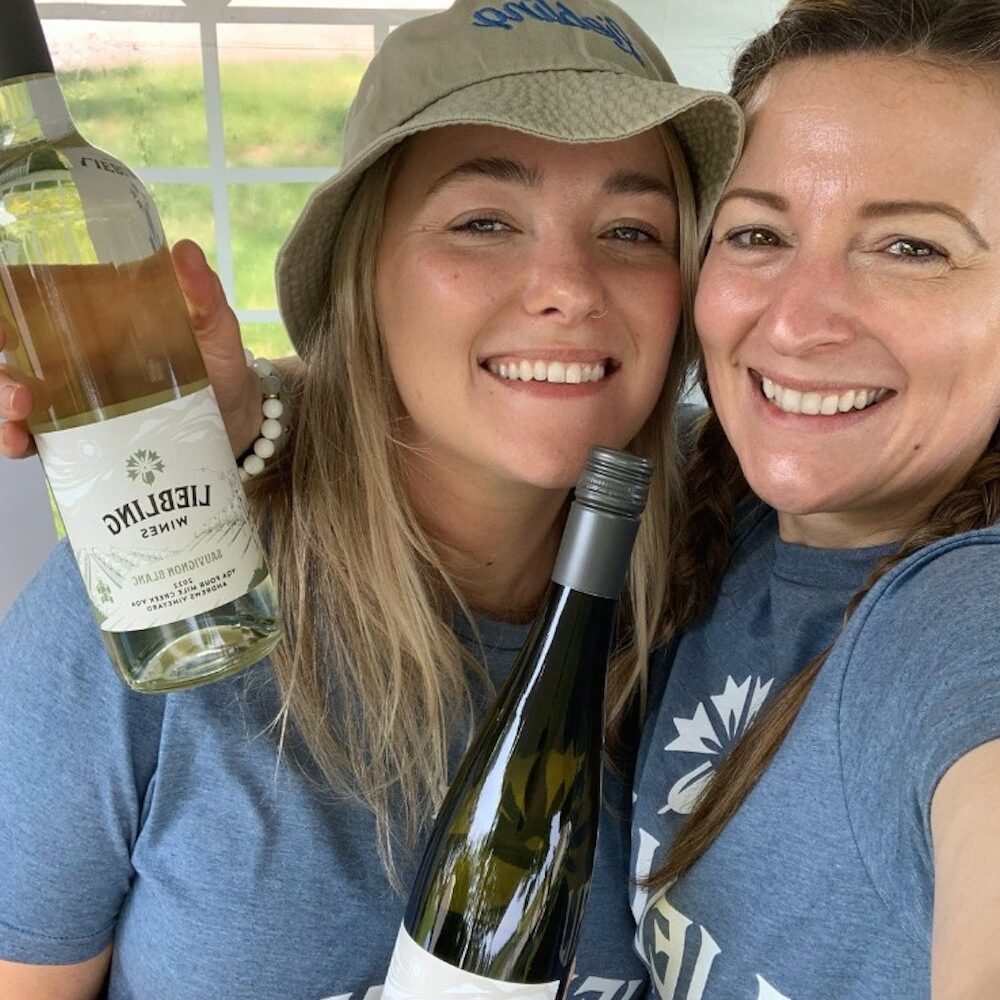






Comment here